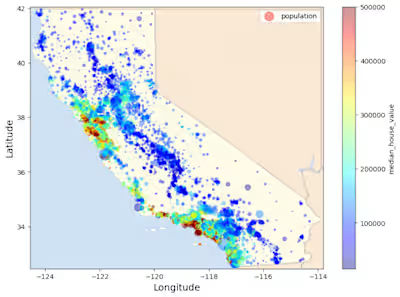Skin Lesion Detection Using Convolutional Neural Networks – ISI…
INTRODUCTION
Welcome to my project on skin lesion detection, developed as part of the ISIC 2024 Challenge. This project marks my first foray into this competition, where the objective is to build a model capable of accurately identifying skin lesions from medical images. The dataset provided by the challenge serves as the foundation for training and evaluating the model.
In this project, I have applied various techniques to ensure that the model performs robustly. Below is an overview of the approach taken:
Data Preprocessing: Cleaning and preparing the dataset for effective training.
Data Augmentation: Enhancing the dataset through techniques that improve the model’s ability to generalize.
Model Building: Designing and implementing a Convolutional Neural Network (CNN) using Keras and TensorFlow.
Training: Fine-tuning the model with appropriate loss functions and metrics to optimize performance.
Evaluation: Rigorous assessment of the model’s accuracy using validation and test datasets.
CODE :
In [1]:
import os
os.environ["KERAS_BACKEND"] = "tensorflow"
import keras_cv
import keras
from keras import ops
import tensorflow as tf
import cv2
import pandas as pd
import numpy as np
from glob import glob
from tqdm.notebook import tqdm
import joblib
import matplotlib.pyplot as plt
print("TensorFlow:", tf.__version__)
print("Keras:", keras.__version__)
print("KerasCV:", keras_cv.__version__)
TensorFlow: 2.16.1
Keras: 3.3.3
KerasCV: 0.9.0
In [2]:
class CFG:
verbose = 1 # Verbosity
seed = 42 # Random seed
neg_sample = 0.01 # Downsample negative calss
pos_sample = 5.0 # Upsample positive class
preset = "efficientnetv2_b2_imagenet" # Name of pretrained classifier
image_size = [128, 128] # Input image size
epochs = 8 # Training epochs
batch_size = 256 # Batch size
lr_mode = "cos" # LR scheduler mode from one of "cos", "step", "exp"
class_names = ['target']
num_classes = 1
In [3]:
keras.utils.set_random_seed(CFG.seed)
In [4]:
BASE_PATH = "/kaggle/input/isic-2024-challenge"
In [5]:
# Train + Valid
df = pd.read_csv(f'{BASE_PATH}/train-metadata.csv', low_memory=False)
df = df.ffill()
display(df.head(2))
# Testing
testing_df = pd.read_csv(f'{BASE_PATH}/test-metadata.csv', low_memory=False)
testing_df = testing_df.ffill()
display(testing_df.head(2))
isic_idtargetpatient_idage_approxsexanatom_site_generalclin_size_long_diam_mmimage_typetbp_tile_typetbp_lv_A…lesion_ididdx_fulliddx_1iddx_2iddx_3iddx_4iddx_5mel_mitotic_indexmel_thick_mmtbp_lv_dnn_lesion_confidence0ISIC_00156700IP_123582860.0malelower extremity3.04TBP tile: close-up3D: white20.244422…NaNBenignBenignNaNNaNNaNNaNNaNNaN97.5172821ISIC_00158450IP_817006560.0malehead/neck1.10TBP tile: close-up3D: white31.712570…IL_6727506BenignBenignNaNNaNNaNNaNNaNNaN3.141455
2 rows × 55 columns
isic_idpatient_idage_approxsexanatom_site_generalclin_size_long_diam_mmimage_typetbp_tile_typetbp_lv_Atbp_lv_Aext…tbp_lv_radial_color_std_maxtbp_lv_stdLtbp_lv_stdLExttbp_lv_symm_2axistbp_lv_symm_2axis_angletbp_lv_xtbp_lv_ytbp_lv_zattributioncopyright_license0ISIC_0015657IP_607433745.0maleposterior torso2.70TBP tile: close-up3D: XP22.8043320.007270…0.3048271.2815322.2999350.47933920-155.065101511.222000113.980100Memorial Sloan Kettering Cancer CenterCC-BY1ISIC_0015729IP_166413935.0femalelower extremity2.52TBP tile: close-up3D: XP16.648679.657964…0.0000001.2719402.0112230.42623025-112.36924629.535889-15.019287Frazer Institute, The University of Queensland…CC-BY
2 rows × 44 columns
In [6]:
print("Class Distribution Before Sampling (%):")
display(df.target.value_counts(normalize=True)*100)
# Sampling
positive_df = df.query("target==0").sample(frac=CFG.neg_sample, random_state=CFG.seed)
negative_df = df.query("target==1").sample(frac=CFG.pos_sample, replace=True, random_state=CFG.seed)
df = pd.concat([positive_df, negative_df], axis=0).sample(frac=1.0)
print("\nCalss Distribution After Sampling (%):")
display(df.target.value_counts(normalize=True)*100)
Class Distribution Before Sampling (%):
target
0 99.902009
1 0.097991
Name: proportion, dtype: float64Calss Distribution After Sampling (%):
target
0 67.09645
1 32.90355
Name: proportion, dtype: float64
In [7]:
from sklearn.utils.class_weight import compute_class_weight
# Assume df is your DataFrame and 'target' is the column with class labels
class_weights = compute_class_weight('balanced', classes=np.unique(df['target']), y=df['target'])
class_weights = dict(enumerate(class_weights))
print("Class Weights:", class_weights)
Class Weights: {0: 0.7451959071624656, 1: 1.519592875318066}
In [8]:
import h5py
training_validation_hdf5 = h5py.File(f"{BASE_PATH}/train-image.hdf5", 'r')
testing_hdf5 = h5py.File(f"{BASE_PATH}/test-image.hdf5", 'r')
In [9]:
isic_id = df.isic_id.iloc[0]
# Image as Byte String
byte_string = training_validation_hdf5[isic_id][()]
print(f"Byte String: {byte_string[:20]}....")
# Convert byte string to numpy array
nparr = np.frombuffer(byte_string, np.uint8)
print("Image:")
image = cv2.imdecode(nparr, cv2.IMREAD_COLOR)[...,::-1] # reverse last axis for bgr -> rgb
plt.imshow(image);
Byte String: b'\xff\xd8\xff\xe0\x00\x10JFIF\x00\x01\x01\x00\x00\x01\x00\x01\x00\x00'....
Image:
In [10]:
from sklearn.model_selection import StratifiedGroupKFold
df = df.reset_index(drop=True) # ensure continuous index
df["fold"] = -1
sgkf = StratifiedGroupKFold(n_splits=5, shuffle=True, random_state=CFG.seed)
for i, (training_idx, validation_idx) in enumerate(sgkf.split(df, y=df.target, groups=df.patient_id)):
df.loc[validation_idx, "fold"] = int(i)
# Use first fold for training and validation
training_df = df.query("fold!=0")
validation_df = df.query("fold==0")
print(f"# Num Train: {len(training_df)} | Num Valid: {len(validation_df)}")
# Num Train: 4706 | Num Valid: 1266
In [11]:
training_df.target.value_counts()
Out[11]:
target
0 3088
1 1618
Name: count, dtype: int64
In [12]:
validation_df.target.value_counts()
Out[12]:
target
0 919
1 347
Name: count, dtype: int64
In [13]:
# Categorical features which will be one hot encoded
CATEGORICAL_COLUMNS = ["sex", "anatom_site_general",
"tbp_tile_type","tbp_lv_location", ]
# Numeraical features which will be normalized
NUMERIC_COLUMNS = ["age_approx", "tbp_lv_nevi_confidence", "clin_size_long_diam_mm",
"tbp_lv_areaMM2", "tbp_lv_area_perim_ratio", "tbp_lv_color_std_mean",
"tbp_lv_deltaLBnorm", "tbp_lv_minorAxisMM", ]
# Tabular feature columns
FEAT_COLS = CATEGORICAL_COLUMNS + NUMERIC_COLUMNS
In [14]:
from tqdm import tqdm
from tqdm.notebook import tqdm
In [15]:
def build_augmenter():
# Define augmentations
aug_layers = [
keras_cv.layers.RandomCutout(height_factor=(0.02, 0.06), width_factor=(0.02, 0.06)),
keras_cv.layers.RandomFlip(mode="horizontal"),
]
# Apply augmentations to random samples
aug_layers = [keras_cv.layers.RandomApply(x, rate=0.5) for x in aug_layers]
# Build augmentation layer
augmenter = keras_cv.layers.Augmenter(aug_layers)
# Apply augmentations
def augment(inp, label):
images = inp["images"]
aug_data = {"images": images}
aug_data = augmenter(aug_data)
inp["images"] = aug_data["images"]
return inp, label
return augment
def build_decoder(with_labels=True, target_size=CFG.image_size):
def decode_image(inp):
# Read jpeg image
file_bytes = inp["images"]
image = tf.io.decode_jpeg(file_bytes)
# Resize
image = tf.image.resize(image, size=target_size, method="area")
# Rescale image
image = tf.cast(image, tf.float32)
image /= 255.0
# Reshape
image = tf.reshape(image, [*target_size, 3])
inp["images"] = image
return inp
def decode_label(label, num_classes):
label = tf.cast(label, tf.float32)
label = tf.reshape(label, [num_classes])
return label
def decode_with_labels(inp, label=None):
inp = decode_image(inp)
label = decode_label(label, CFG.num_classes)
return (inp, label)
return decode_with_labels if with_labels else decode_image
In [16]:
def build_dataset(
isic_ids,
hdf5,
features,
labels=None,
batch_size=32,
decode_fn=None,
augment_fn=None,
augment=False,
shuffle=1024,
cache=True,
drop_remainder=False,
):
if decode_fn is None:
decode_fn = build_decoder(labels is not None)
if augment_fn is None:
augment_fn = build_augmenter()
AUTO = tf.data.experimental.AUTOTUNE
images = [None]*len(isic_ids)
for i, isic_id in enumerate(tqdm(isic_ids, desc="Loading Images ")):
images[i] = hdf5[isic_id][()]
inp = {"images": images, "features": features}
slices = (inp, labels) if labels is not None else inp
ds = tf.data.Dataset.from_tensor_slices(slices)
ds = ds.cache() if cache else ds
ds = ds.map(decode_fn, num_parallel_calls=AUTO)
if shuffle:
ds = ds.shuffle(shuffle, seed=CFG.seed)
opt = tf.data.Options()
opt.deterministic = False
ds = ds.with_options(opt)
ds = ds.batch(batch_size, drop_remainder=drop_remainder)
ds = ds.map(augment_fn, num_parallel_calls=AUTO) if augment else ds
ds = ds.prefetch(AUTO)
return ds
In [17]:
## Train
print("# Training:")
training_features = dict(training_df[FEAT_COLS])
training_ids = training_df.isic_id.values
training_labels = training_df.target.values
training_ds = build_dataset(training_ids, training_validation_hdf5, training_features,
training_labels, batch_size=CFG.batch_size,
shuffle=True, augment=True)
# Valid
print("# Validation:")
validation_features = dict(validation_df[FEAT_COLS])
validation_ids = validation_df.isic_id.values
validation_labels = validation_df.target.values
validation_ds = build_dataset(validation_ids, training_validation_hdf5, validation_features,
validation_labels, batch_size=CFG.batch_size,
shuffle=False, augment=False)
# Training:
Loading Images : 100%
4706/4706 [00:22<00:00, 255.31it/s]
# Validation:
Loading Images : 100%
1266/1266 [00:05<00:00, 256.33it/s]
In [18]:
feature_space = keras.utils.FeatureSpace(
features={
# Categorical features encoded as integers
"sex": "string_categorical",
"anatom_site_general": "string_categorical",
"tbp_tile_type": "string_categorical",
"tbp_lv_location": "string_categorical",
# Numerical features to discretize
"age_approx": "float_discretized",
# Numerical features to normalize
"tbp_lv_nevi_confidence": "float_normalized",
"clin_size_long_diam_mm": "float_normalized",
"tbp_lv_areaMM2": "float_normalized",
"tbp_lv_area_perim_ratio": "float_normalized",
"tbp_lv_color_std_mean": "float_normalized",
"tbp_lv_deltaLBnorm": "float_normalized",
"tbp_lv_minorAxisMM": "float_normalized",
},
output_mode="concat",
)
In [19]:
training_ds_with_no_labels = training_ds.map(lambda x, _: x["features"])
feature_space.adapt(training_ds_with_no_labels)
In [20]:
for x, _ in training_ds.take(1):
preprocessed_x = feature_space(x["features"])
print("preprocessed_x.shape:", preprocessed_x.shape)
print("preprocessed_x.dtype:", preprocessed_x.dtype)
preprocessed_x.shape: (256, 71)
preprocessed_x.dtype: <dtype: 'float32'>
In [21]:
training_ds = training_ds.map(
lambda x, y: ({"images": x["images"],
"features": feature_space(x["features"])}, y), num_parallel_calls=tf.data.AUTOTUNE)
validation_ds = validation_ds.map(
lambda x, y: ({"images": x["images"],
"features": feature_space(x["features"])}, y), num_parallel_calls=tf.data.AUTOTUNE)
In [22]:
batch = next(iter(validation_ds))
print("Images:",batch[0]["images"].shape)
print("Features:", batch[0]["features"].shape)
print("Targets:", batch[1].shape)
Images: (256, 128, 128, 3)
Features: (256, 71)
Targets: (256, 1)
In [23]:
# AUC
auc = keras.metrics.AUC()
# Loss
loss = keras.losses.BinaryCrossentropy(label_smoothing=0.02)
In [24]:
# Define input layers
image_input = keras.Input(shape=(*CFG.image_size, 3), name="images")
feat_input = keras.Input(shape=(feature_space.get_encoded_features().shape[1],), name="features")
inp = {"images":image_input, "features":feat_input}
# Branch for image input
backbone = keras_cv.models.EfficientNetV2Backbone.from_preset(CFG.preset)
x1 = backbone(image_input)
x1 = keras.layers.GlobalAveragePooling2D()(x1)
x1 = keras.layers.Dropout(0.2)(x1)
# Branch for tabular/feature input
x2 = keras.layers.Dense(96, activation="selu")(feat_input)
x2 = keras.layers.Dense(128, activation="selu")(x2)
x2 = keras.layers.Dropout(0.1)(x2)
# Concatenate both branches
concat = keras.layers.Concatenate()([x1, x2])
# Output layer
out = keras.layers.Dense(1, activation="sigmoid", dtype="float32")(concat)
# Build model
model = keras.models.Model(inp, out)
# Compile the model
model.compile(
optimizer=keras.optimizers.Adam(learning_rate=1e-4),
loss=loss,
metrics=[auc],
)
# Model Summary
model.summary()
Model: "functional_1"
┏━━━━━━━━━━━━━━━━━━━━━┳━━━━━━━━━━━━━━━━━━━┳━━━━━━━━━━━━┳━━━━━━━━━━━━━━━━━━━┓
┃ Layer (type) ┃ Output Shape ┃ Param # ┃ Connected to ┃
┡━━━━━━━━━━━━━━━━━━━━━╇━━━━━━━━━━━━━━━━━━━╇━━━━━━━━━━━━╇━━━━━━━━━━━━━━━━━━━┩
│ images (InputLayer) │ (None, 128, 128, │ 0 │ - │
│ │ 3) │ │ │
├─────────────────────┼───────────────────┼────────────┼───────────────────┤
│ features │ (None, 71) │ 0 │ - │
│ (InputLayer) │ │ │ │
├─────────────────────┼───────────────────┼────────────┼───────────────────┤
│ efficient_net_v2b2… │ (None, 4, 4, │ 8,769,374 │ images[0][0] │
│ (EfficientNetV2Bac… │ 1408) │ │ │
├─────────────────────┼───────────────────┼────────────┼───────────────────┤
│ dense (Dense) │ (None, 96) │ 6,912 │ features[0][0] │
├─────────────────────┼───────────────────┼────────────┼───────────────────┤
│ global_average_poo… │ (None, 1408) │ 0 │ efficient_net_v2… │
│ (GlobalAveragePool… │ │ │ │
├─────────────────────┼───────────────────┼────────────┼───────────────────┤
│ dense_1 (Dense) │ (None, 128) │ 12,416 │ dense[0][0] │
├─────────────────────┼───────────────────┼────────────┼───────────────────┤
│ dropout (Dropout) │ (None, 1408) │ 0 │ global_average_p… │
├─────────────────────┼───────────────────┼────────────┼───────────────────┤
│ dropout_1 (Dropout) │ (None, 128) │ 0 │ dense_1[0][0] │
├─────────────────────┼───────────────────┼────────────┼───────────────────┤
│ concatenate_1 │ (None, 1536) │ 0 │ dropout[0][0], │
│ (Concatenate) │ │ │ dropout_1[0][0] │
├─────────────────────┼───────────────────┼────────────┼───────────────────┤
│ dense_2 (Dense) │ (None, 1) │ 1,537 │ concatenate_1[0]… │
└─────────────────────┴───────────────────┴────────────┴───────────────────┘
Total params: 8,790,239 (33.53 MB)
Trainable params: 8,707,951 (33.22 MB)
Non-trainable params: 82,288 (321.44 KB)
In [25]:
keras.utils.plot_model(model, show_shapes=True, show_layer_names=True, dpi=60)
Out[25]:
In [26]:
import math
def get_lr_callback(batch_size=8, mode='cos', epochs=10, plot=False):
lr_start, lr_max, lr_min = 2.5e-5, 5e-6 * batch_size, 0.8e-5
lr_ramp_ep, lr_sus_ep, lr_decay = 3, 0, 0.75
def lrfn(epoch): # Learning rate update function
if epoch < lr_ramp_ep: lr = (lr_max - lr_start) / lr_ramp_ep * epoch + lr_start
elif epoch < lr_ramp_ep + lr_sus_ep: lr = lr_max
elif mode == 'exp': lr = (lr_max - lr_min) * lr_decay**(epoch - lr_ramp_ep - lr_sus_ep) + lr_min
elif mode == 'step': lr = lr_max * lr_decay**((epoch - lr_ramp_ep - lr_sus_ep) // 2)
elif mode == 'cos':
decay_total_epochs, decay_epoch_index = epochs - lr_ramp_ep - lr_sus_ep + 3, epoch - lr_ramp_ep - lr_sus_ep
phase = math.pi * decay_epoch_index / decay_total_epochs
lr = (lr_max - lr_min) * 0.5 * (1 + math.cos(phase)) + lr_min
return lr
if plot: # Plot lr curve if plot is True
plt.figure(figsize=(10, 5))
plt.plot(np.arange(epochs), [lrfn(epoch) for epoch in np.arange(epochs)], marker='o')
plt.xlabel('epoch'); plt.ylabel('lr')
plt.title('LR Scheduler')
plt.show()
return keras.callbacks.LearningRateScheduler(lrfn, verbose=False) # Create lr callback
In [27]:
inputs, targets = next(iter(training_ds))
images = inputs["images"]
num_images, NUMERIC_COLUMNS = 8, 4
plt.figure(figsize=(4 * NUMERIC_COLUMNS, num_images // NUMERIC_COLUMNS * 4))
for i, (image, target) in enumerate(zip(images[:num_images], targets[:num_images])):
plt.subplot(num_images // NUMERIC_COLUMNS, NUMERIC_COLUMNS, i + 1)
image = image.numpy().astype("float32")
target= target.numpy().astype("int32")[0]
image = (image - image.min()) / (image.max() + 1e-4)
plt.imshow(image)
plt.title(f"Target: {target}")
plt.axis("off")
plt.tight_layout()
plt.show()
In [28]:
lr_cb = get_lr_callback(CFG.batch_size, mode="exp", plot=True)
In [29]:
ckpt_cb = keras.callbacks.ModelCheckpoint(
"best_model.keras", # Filepath where the model will be saved.
monitor="val_auc", # Metric to monitor (validation AUC in this case).
save_best_only=True, # Save only the model with the best performance.
save_weights_only=False, # Save the entire model (not just the weights).
mode="max", # The model with the maximum 'val_auc' will be saved.
)
In [30]:
history = model.fit(
training_ds,
epochs=CFG.epochs,
callbacks=[lr_cb, ckpt_cb],
validation_data=validation_ds,
verbose=CFG.verbose,
class_weight=class_weights,
)
Epoch 1/8
WARNING: All log messages before absl::InitializeLog() is called are written to STDERR
I0000 00:00:1724872959.215852 72 service.cc:145] XLA service 0x7dd614018260 initialized for platform CUDA (this does not guarantee that XLA will be used). Devices:
I0000 00:00:1724872959.215927 72 service.cc:153] StreamExecutor device (0): Tesla T4, Compute Capability 7.5
I0000 00:00:1724872959.215933 72 service.cc:153] StreamExecutor device (1): Tesla T4, Compute Capability 7.5
WARNING: All log messages before absl::InitializeLog() is called are written to STDERR
I0000 00:00:1724873079.626884 72 asm_compiler.cc:369] ptxas warning : Registers are spilled to local memory in function 'loop_add_subtract_fusion_18', 72 bytes spill stores, 72 bytes spill loads
I0000 00:00:1724873079.747367 72 device_compiler.h:188] Compiled cluster using XLA! This line is logged at most once for the lifetime of the process.
16/19 ━━━━━━━━━━━━━━━━━━━━ 1s 366ms/step - auc: 0.4186 - loss: 0.7458I0000 00:00:1724873190.922405 70 asm_compiler.cc:369] ptxas warning : Registers are spilled to local memory in function 'loop_add_subtract_fusion_18', 72 bytes spill stores, 72 bytes spill loads
19/19 ━━━━━━━━━━━━━━━━━━━━ 308s 7s/step - auc: 0.4260 - loss: 0.7432 - val_auc: 0.3284 - val_loss: 0.7782 - learning_rate: 2.5000e-05
Epoch 2/8
19/19 ━━━━━━━━━━━━━━━━━━━━ 14s 673ms/step - auc: 0.7664 - loss: 0.5888 - val_auc: 0.7247 - val_loss: 0.5442 - learning_rate: 4.4333e-04
Epoch 3/8
19/19 ━━━━━━━━━━━━━━━━━━━━ 14s 659ms/step - auc: 0.9539 - loss: 0.3044 - val_auc: 0.7679 - val_loss: 0.5726 - learning_rate: 8.6167e-04
Epoch 4/8
19/19 ━━━━━━━━━━━━━━━━━━━━ 14s 666ms/step - auc: 0.9880 - loss: 0.1778 - val_auc: 0.8706 - val_loss: 0.4317 - learning_rate: 0.0013
Epoch 5/8
19/19 ━━━━━━━━━━━━━━━━━━━━ 14s 664ms/step - auc: 0.9965 - loss: 0.1228 - val_auc: 0.9185 - val_loss: 0.4356 - learning_rate: 9.6200e-04
Epoch 6/8
19/19 ━━━━━━━━━━━━━━━━━━━━ 19s 598ms/step - auc: 0.9988 - loss: 0.0951 - val_auc: 0.9064 - val_loss: 0.4878 - learning_rate: 7.2350e-04
Epoch 7/8
19/19 ━━━━━━━━━━━━━━━━━━━━ 13s 606ms/step - auc: 0.9993 - loss: 0.0796 - val_auc: 0.9059 - val_loss: 0.5100 - learning_rate: 5.4462e-04
Epoch 8/8
19/19 ━━━━━━━━━━━━━━━━━━━━ 13s 612ms/step - auc: 0.9997 - loss: 0.0761 - val_auc: 0.9029 - val_loss: 0.5102 - learning_rate: 4.1047e-04
In [31]:
# Extract AUC and validation AUC from history
auc = history.history['auc']
val_auc = history.history['val_auc']
epochs = range(1, len(auc) + 1)
# Find the epoch with the maximum val_auc
max_val_auc_epoch = np.argmax(val_auc)
max_val_auc = val_auc[max_val_auc_epoch]
# Plotting
plt.figure(figsize=(10, 6))
plt.plot(epochs, auc, 'o-', label='Training AUC', markersize=5, color='tab:blue')
plt.plot(epochs, val_auc, 's-', label='Validation AUC', markersize=5, color='tab:orange')
# Highlight the max val_auc
plt.scatter(max_val_auc_epoch + 1, max_val_auc, color='red', s=100, label=f'Max Val AUC: {max_val_auc:.4f}')
plt.annotate(f'Max Val AUC: {max_val_auc:.4f}',
xy=(max_val_auc_epoch + 1, max_val_auc),
xytext=(max_val_auc_epoch + 1 + 0.5, max_val_auc - 0.05),
arrowprops=dict(facecolor='black', arrowstyle="->"),
fontsize=12,
color='tab:red')
# Enhancing the plot
plt.title('AUC over Epochs', fontsize=14)
plt.xlabel('Epoch', fontsize=12)
plt.ylabel('AUC', fontsize=12)
plt.legend(loc='lower right', fontsize=12)
plt.grid(True)
plt.xticks(epochs)
# Show the plot
plt.show()
In [32]:
# Best Result
best_score = max(history.history['val_auc'])
best_epoch = np.argmax(history.history['val_auc']) + 1
print("#" * 10 + " Result " + "#" * 10)
print(f"Best AUC: {best_score:.5f}")
print(f"Best Epoch: {best_epoch}")
print("#" * 28)
########## Result ##########
Best AUC: 0.91847
Best Epoch: 5
############################
In [33]:
# Manually save the model to /kaggle/working/
model.save('/kaggle/working/best_model.keras')
# Verify the file is saved
file_path = '/kaggle/working/best_model.keras'
print(os.path.isfile(file_path)) # Should return True if the file exists
True
In [34]:
model.load_weights("best_model.keras")
In [35]:
# Testing
print("# Testing:")
testing_features = dict(testing_df[FEAT_COLS])
testing_ids = testing_df.isic_id.values
testing_ds = build_dataset(testing_ids, testing_hdf5,
testing_features, batch_size=CFG.batch_size,
shuffle=False, augment=False, cache=False)
# Apply feature space processing
testing_ds = testing_ds.map(
lambda x: {"images": x["images"],
"features": feature_space(x["features"])}, num_parallel_calls=tf.data.AUTOTUNE)
# Testing:
Loading Images : 100%
3/3 [00:00<00:00, 116.94it/s]
In [36]:
preds = model.predict(testing_ds).squeeze()
1/1 ━━━━━━━━━━━━━━━━━━━━ 8s 8s/step
In [37]:
inputs = next(iter(testing_ds))
images = inputs["images"]
# Plotting
plt.figure(figsize=(10, 4))
for i in range(3):
plt.subplot(1, 3, i+1) # 1 row, 3 columns, i+1th subplot
plt.imshow(images[i]) # Show image
plt.title(f'Prediction: {preds[i]:.2f}') # Set title with prediction
plt.axis('off') # Hide axis
plt.suptitle('Model Predictions on Testing Images', fontsize=16)
plt.tight_layout()
plt.show()
In [38]:
pred_df = testing_df[["isic_id"]].copy()
pred_df["target"] = preds.tolist()
sub_df = pd.read_csv(f'{BASE_PATH}/sample_submission.csv')
sub_df = sub_df[["isic_id"]].copy()
sub_df = sub_df.merge(pred_df, on="isic_id", how="left")
sub_df.to_csv("submission.csv", index=False)
sub_df.head()
Out[38]:
isic_idtarget0ISIC_00156570.0073261ISIC_00157290.0010462ISIC_00157400.014811
Designed with WordPress
Design a site like this with WordPress.com
Like this project
Posted Sep 11, 2024
The objective of project is to build a model capable of accurately identifying skin lesions from medical images. It's developed for ISIC 2024 Challenge.






